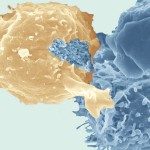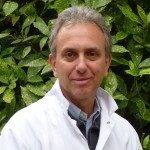Link to Pubmed [PMID] – 24942582
J. Virol. 2014 Sep;88(17):9782-8
UNLABELLED: Although recombination is a major source of genetic variability in retroviruses, no recombinant strain had been observed for human T-lymphotropic virus type 1 (HTLV-1), the first isolated human-pathogenic retrovirus. Different genotypes exist for HTLV-1: Genotypes b and d to g are restricted to central Africa, while genotype c is only endemic in Australo-Melanesia. In contrast, the cosmopolitan genotype a is widely distributed. We applied a combination of phylogenetics and recombination analysis approaches to a set of new HTLV-1 sequences, which we collected from 19 countries throughout Africa, the continent where the virus has the largest endemic presence. This led us to demonstrate the presence of recombinants in HTLV-1. Indeed, the HTLV-1 strains currently present in North Africa have originated from a recombinant event between strains from Senegal and West Africa. This recombination is estimated to have occurred around 4,000 years ago. This recombination seems to have been generated during reverse transcription. In conclusion, we demonstrate that, albeit rare, recombination can occur in HTLV-1 and may play a role in the evolution of this retrovirus.
IMPORTANCE: A number of HTLV-1 subtypes have been described in different populations, but none of the genetic differences between these subtypes have been ascribed to recombination events. Here we report an HTLV-1 recombinant virus among infected individuals in North Africa. This demonstrates that, contrary to what was thought, recombination can occur and could play a role in the evolution of HTLV-1.



